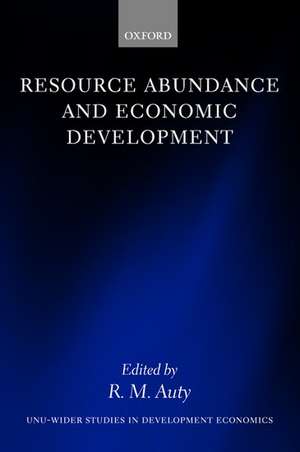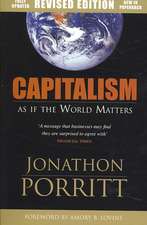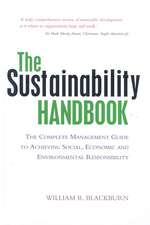Resource Abundance and Economic Development: WIDER Studies in Development Economics
Editat de R. M. Autyen Limba Engleză Paperback – 7 oct 2004
| Toate formatele și edițiile | Preț | Express |
|---|---|---|
| Paperback (1) | 587.23 lei 31-37 zile | |
| OUP OXFORD – 7 oct 2004 | 587.23 lei 31-37 zile | |
| Hardback (1) | 1039.69 lei 31-37 zile | |
| OUP OXFORD – 28 iun 2001 | 1039.69 lei 31-37 zile |
Din seria WIDER Studies in Development Economics
- 30%
 Preț: 504.34 lei
Preț: 504.34 lei - 26%
 Preț: 733.49 lei
Preț: 733.49 lei - 30%
 Preț: 597.88 lei
Preț: 597.88 lei - 17%
 Preț: 594.16 lei
Preț: 594.16 lei - 7%
 Preț: 159.68 lei
Preț: 159.68 lei - 13%
 Preț: 737.02 lei
Preț: 737.02 lei - 17%
 Preț: 583.39 lei
Preț: 583.39 lei - 28%
 Preț: 473.92 lei
Preț: 473.92 lei - 30%
 Preț: 501.49 lei
Preț: 501.49 lei - 30%
 Preț: 724.70 lei
Preț: 724.70 lei - 30%
 Preț: 748.64 lei
Preț: 748.64 lei - 31%
 Preț: 434.64 lei
Preț: 434.64 lei - 18%
 Preț: 333.97 lei
Preț: 333.97 lei - 34%
 Preț: 848.58 lei
Preț: 848.58 lei - 34%
 Preț: 848.33 lei
Preț: 848.33 lei - 34%
 Preț: 803.83 lei
Preț: 803.83 lei - 34%
 Preț: 954.23 lei
Preț: 954.23 lei - 34%
 Preț: 892.48 lei
Preț: 892.48 lei - 22%
 Preț: 188.78 lei
Preț: 188.78 lei - 30%
 Preț: 617.12 lei
Preț: 617.12 lei - 19%
 Preț: 333.48 lei
Preț: 333.48 lei - 27%
 Preț: 378.41 lei
Preț: 378.41 lei - 34%
 Preț: 1039.04 lei
Preț: 1039.04 lei - 34%
 Preț: 1043.37 lei
Preț: 1043.37 lei - 27%
 Preț: 329.58 lei
Preț: 329.58 lei - 34%
 Preț: 1291.62 lei
Preț: 1291.62 lei - 23%
 Preț: 1213.11 lei
Preț: 1213.11 lei - 34%
 Preț: 879.76 lei
Preț: 879.76 lei - 19%
 Preț: 652.65 lei
Preț: 652.65 lei - 34%
 Preț: 1039.69 lei
Preț: 1039.69 lei - 34%
 Preț: 892.84 lei
Preț: 892.84 lei - 27%
 Preț: 443.57 lei
Preț: 443.57 lei - 22%
 Preț: 526.33 lei
Preț: 526.33 lei - 30%
 Preț: 913.24 lei
Preț: 913.24 lei - 34%
 Preț: 998.62 lei
Preț: 998.62 lei - 31%
 Preț: 396.19 lei
Preț: 396.19 lei - 17%
 Preț: 413.16 lei
Preț: 413.16 lei - 34%
 Preț: 1188.77 lei
Preț: 1188.77 lei - 34%
 Preț: 817.30 lei
Preț: 817.30 lei - 30%
 Preț: 1012.76 lei
Preț: 1012.76 lei - 7%
 Preț: 360.77 lei
Preț: 360.77 lei - 31%
 Preț: 447.33 lei
Preț: 447.33 lei - 27%
 Preț: 1295.58 lei
Preț: 1295.58 lei - 31%
 Preț: 441.21 lei
Preț: 441.21 lei
Preț: 587.23 lei
Preț vechi: 888.07 lei
-34% Nou
Puncte Express: 881
Preț estimativ în valută:
112.40€ • 122.13$ • 94.48£
112.40€ • 122.13$ • 94.48£
Carte tipărită la comandă
Livrare economică 11-17 aprilie
Preluare comenzi: 021 569.72.76
Specificații
ISBN-13: 9780199275786
ISBN-10: 0199275785
Pagini: 360
Ilustrații: numerous graphs and tables, 2 line drawings
Dimensiuni: 156 x 235 x 21 mm
Greutate: 0.55 kg
Editura: OUP OXFORD
Colecția OUP Oxford
Seria WIDER Studies in Development Economics
Locul publicării:Oxford, United Kingdom
ISBN-10: 0199275785
Pagini: 360
Ilustrații: numerous graphs and tables, 2 line drawings
Dimensiuni: 156 x 235 x 21 mm
Greutate: 0.55 kg
Editura: OUP OXFORD
Colecția OUP Oxford
Seria WIDER Studies in Development Economics
Locul publicării:Oxford, United Kingdom
Recenzii
Review from previous edition Not only does this book provide a foray into the cutting edge of cross-disciplinary research into the problems of natural resource-led development, but it is also specialized reading on how we might more broadly understand the connections between resources and conflict. This volume poses a serious challenge to theories of 'ecoviolence' that see scarcity of resources as a cause of socio-economic decay and violence.
... the volume is to be welcomed, and will hopefully be widely read and cited
... the volume is to be welcomed, and will hopefully be widely read and cited
Notă biografică
R. M. Auty is Professor of Economic Geography in the Department of Geography at Lancaster University.














